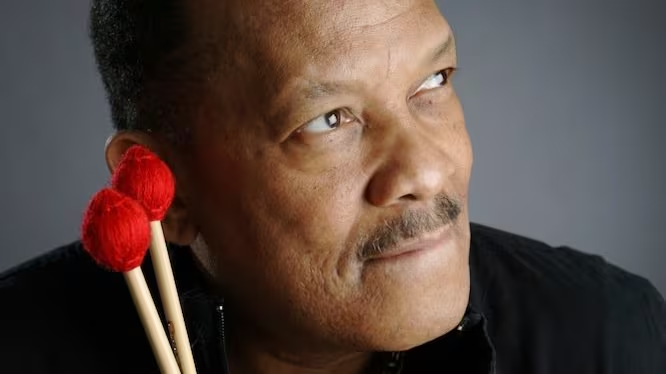Introduction
Roy Ayers is a name synonymous with innovation in jazz, funk, and soul. A vibraphone virtuoso, composer, and pioneer of the “jazz-funk” fusion movement, Ayers has left an indelible mark on music for over six decades. Whether you’re a longtime fan or new to his work, this guide dives into his life, career highlights, and the enduring influence that cements him as a legend.
Who Is Roy Ayers? Essential Facts
Roy Ayers was born on September 10, 1940, in Los Angeles, California. Raised in a musical household—his father played trombone, and his mother taught piano—Ayers’ early exposure to jazz legends like Lionel Hampton and Milt Jackson ignited his passion for the vibraphone.
Key Facts:
- Instrument Mastery: Ayers’ signature sound comes from his mastery of the vibraphone, a percussive instrument with metal bars and resonators.
- Genre Fusion: He blended jazz improvisation with funk grooves, creating a sound that appealed to both jazz purists and mainstream audiences.
- Cultural Icon: His music became a cornerstone of the 1970s Black American experience, soundtracking everything from block parties to civil rights movements.

Image credit by https://www.actionnewsjax.com/
Career Milestones: From Jazz Prodigy to Funk Legend
1. Early Career (1960s)
Ayers began his career in the early 1960s as a sideman for jazz heavyweights like Herbie Mann and Jack Wilson. His debut album, West Coast Vibes (1963), showcased his technical skill and laid the groundwork for his future experiments with genre-blending.
2. Breakthrough with Ubiquity (1970s)
In 1970, Ayers formed Roy Ayers Ubiquity, a band that fused jazz, funk, and soul. This era birthed iconic albums like He’s Coming (1971) and Red, Black & Green (1973), featuring tracks like “Everybody Loves the Sunshine”—a soulful anthem that remains a cultural touchstone.
3. Peak Years & Collaborations (1980s–1990s)
Ayers became a sought-after collaborator, working with artists like Erykah Badu, Fela Kuti, and Rick James. His 1980 hit “Running Away” topped R&B charts, while his partnership with Nigerian Afrobeat legend Fela Kuti blended African rhythms with American funk.
4. Later Work & Legacy (2000s–Present)
Even in his 80s, Ayers continues to tour and inspire. His music has been sampled by hip-hop icons such as Tupac, Mary J. Blige, and Tyler, the Creator, proving its timeless relevance.
Musical Impact: Why Roy Ayers Still Matters
1. The Soundtrack of a Movement
Ayers’ music became the backdrop for 1970s Black empowerment. Albums like Red, Black & Green reflected themes of unity and social justice, resonating deeply during the Civil Rights and Black Power eras.
2. Bridging Jazz and Hip-Hop
Ayers’ grooves are a goldmine for hip-hop producers. Over 400 samples of his work appear in tracks by A Tribe Called Quest, Ice Cube, and The Notorious B.I.G., bridging generations of Black musical expression.
3. The Godfather of Neo-Soul
Artists like D’Angelo, Erykah Badu, and Robert Glasper cite Ayers as a key influence. His warm, melodic style laid the foundation for the neo-soul movement of the 1990s and 2000s.
Roy Ayers’ Top 5 Must-Listen Tracks
- “Everybody Loves the Sunshine” (1976) – A laid-back ode to joy and resilience.
- “Running Away” (1980) – A funk-disco crossover hit.
- “Searchin’” (1978) – A soulful blend of jazz and R&B.
- “We Live in Brooklyn, Baby” (1972) – A gritty tribute to urban life.
- “Don’t Stop the Feeling” (1978) – A dancefloor classic.
Frequently Asked Questions (FAQ)
Q: What is Roy Ayers’ most famous song?
A: “Everybody Loves the Sunshine” remains his signature track, celebrated for its uplifting vibe and cultural significance.
Q: Did Roy Ayers win any major awards?
A: While he hasn’t won a Grammy, Ayers received the Lifetime Achievement Award from the National Endowment for the Arts in 2019.
Q: Is Roy Ayers still performing?
A: Yes! He tours globally, bringing his timeless sound to new audiences.
Q: How did Roy Ayers influence hip-hop?
A: His grooves and basslines are heavily sampled, making him one of the most-referenced artists in hip-hop history.
Conclusion: The Timeless Groove of Roy Ayers
Roy Ayers isn’t just a musician—he’s a cultural architect. From his jazz roots to his funk innovations, his work transcends genres and generations. Whether you’re vibing to “Everybody Loves the Sunshine” or discovering his deep cuts, Ayers’ music is a testament to creativity, resilience, and the universal language of groove.
